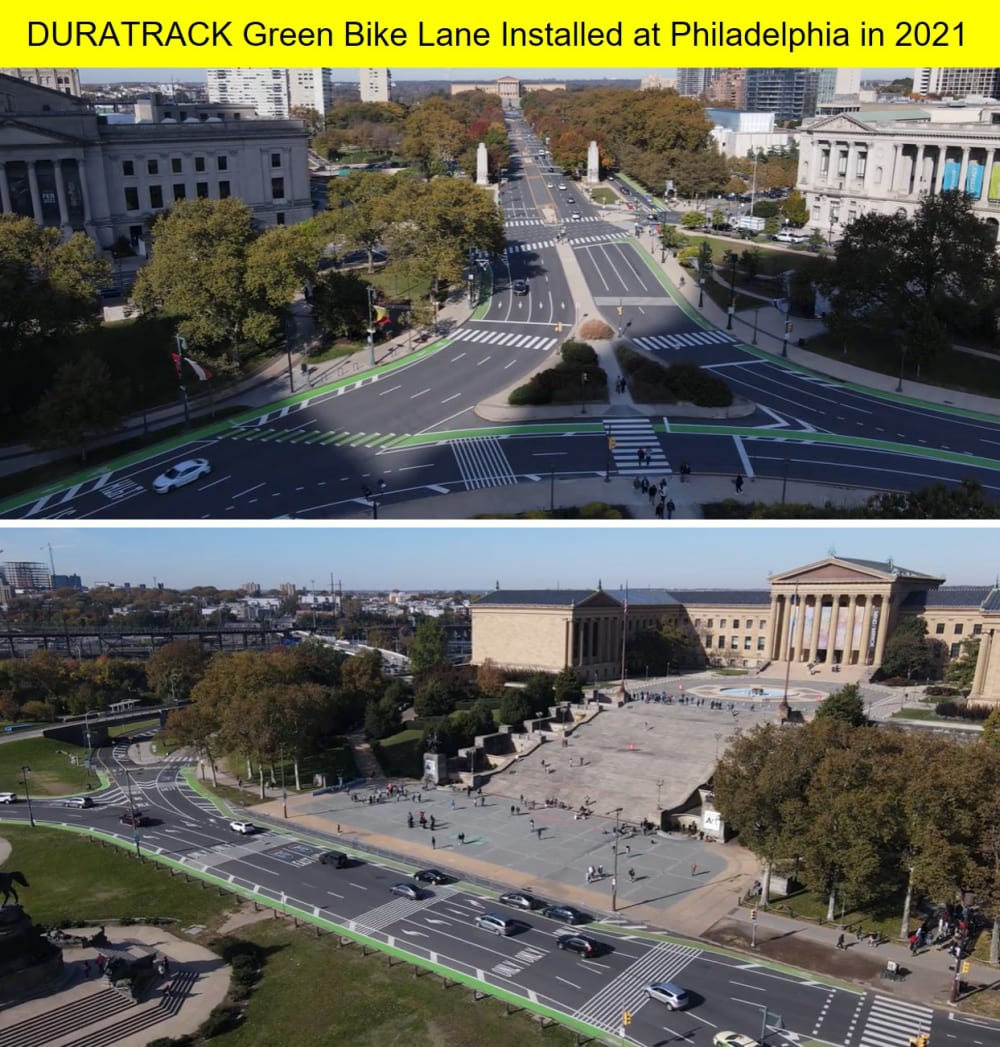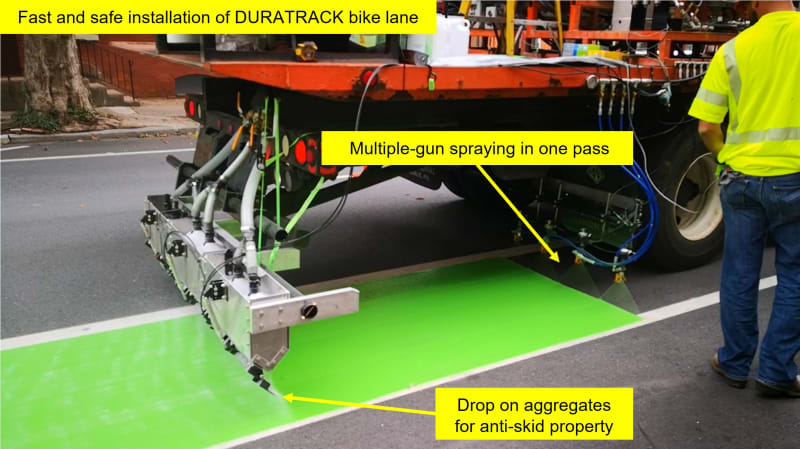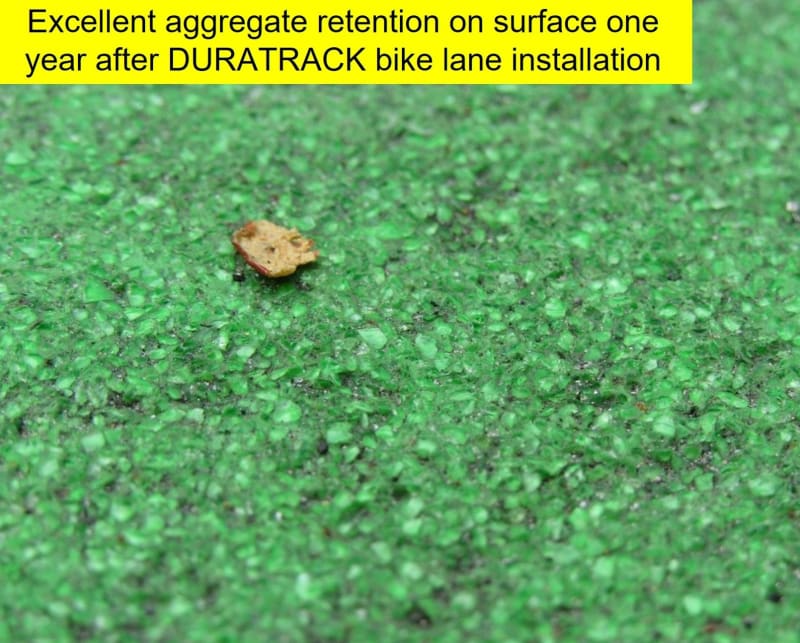

Nowadays, more people are choosing biking either as an alternative mode to transportation or as an outdoor activity for recreational purpose. The cycling trend was particularly boosted during COVID-19 pandemic as evidenced by the soaring sales in bikes and accessories. Unfortunately, the cyclist fatalities have also increased 35% over the past ten years. As one of the highest priorities, municipalities keep looking for ways to improve the safety of vulnerable road users. Studies have shown that addition of bike lanes can effectively reduce the bike crashes up to 49%, and green color filled bike lanes can bring extra benefits, such as identifying potential conflict areas, increasing visibility of cyclists, discouraging illegal cars driving or parking on bike lanes, and enhancing motorist yielding behavior. It is worth noting that while most of bicyclist injuries happen at intersections, more than 60% of the fatal crashes occur at non-intersection areas. Therefore, it is imperative to build and maintain a complete network of green bike lanes for the safety of bicyclists.
Typical technologies in the market for durable green bike lanes are two component cold plastic based on methyl methacrylate, hot melt thermoplastic and two component epoxy. However, the costly installation (>$10 per square feet) because of labor-intensive process makes them unaffordable at large scale for municipalities. For cold plastic or epoxy, the installation involves multiple steps from masking road surface, mixing components, pouring out the mix, squeegeeing or rolling to spread, to removing all masking tapes. For thermoplastic product, it normally needs to coat the road surface with primer first for better adhesion, and then use torch or equipment heated at 400-500 °F to melt down plastic. In addition, cleaning solvent like Acetone and unpleasant odor are often complained by both contractors and neighborhoods.
DURATRACK two component waterborne coating offers a new solution to the durable green bike lane market. It has no odor, low volatile organic compound (VOC), is easy to handle with and clean up with water. The DURATRACK coating comprises of two resins R-100 and AEH-100. R-100 polymer is 100% acrylic, providing excellent weathering resistance and quick drying performance. AEH-100 polymer is a novel carrier of epoxy molecules, which are imbibed inside emulsions. This special design enables the coating system to have a lower viscosity, longer pot-life, better UV durability than typical epoxy coatings. The reaction of R-100 and AEH-100 finally presents a tough acrylic epoxy hybrid coating of excellent adhesion to road surface and wearing resistance. Another distinct feature of DURATRACK is it can be applied with equipment for conventional one component waterborne traffic paint. Achieving high build and wide coatings in one pass by machine significantly lowers the installation cost (up to one third) compared to other durable technologies. Recently, 35,000 square feet green bike lane was installed in Philadelphia in just three nights. The city official said, “…DURATRACK product will be a game changer…”, “…finally allow us to use green bike lanes more widely, and provide a safer street network for all users in the process.”
Video
-
Awards
-
 2022 Sustainable Technologies/Future Energy Honorable Mention
2022 Sustainable Technologies/Future Energy Honorable Mention -
 2022 Top 100 Entries
2022 Top 100 Entries
Like this entry?
-
About the Entrant
- Name:Bingquan Li
- Type of entry:teamTeam members:Bingquan Li
Eric Greyson
Laura Vielhauer
Seth Roberts
Thomas Winterberg
Karlie Godshall
Stephanie Long
Joseph Grant
Kenneth Smith
Carly Haller
Arthur Leman
Joy Gallagher
Jeff Millman
Robert Bills
Jamie Sullivan
Janet Tesfai
Andrea Greyson
Kiran Baikerikar
Dow Chemical Company - Software used for this entry:none
- Patent status:patented








